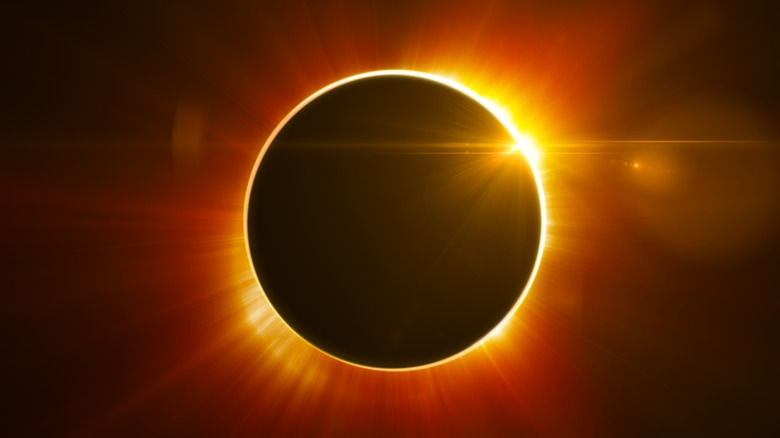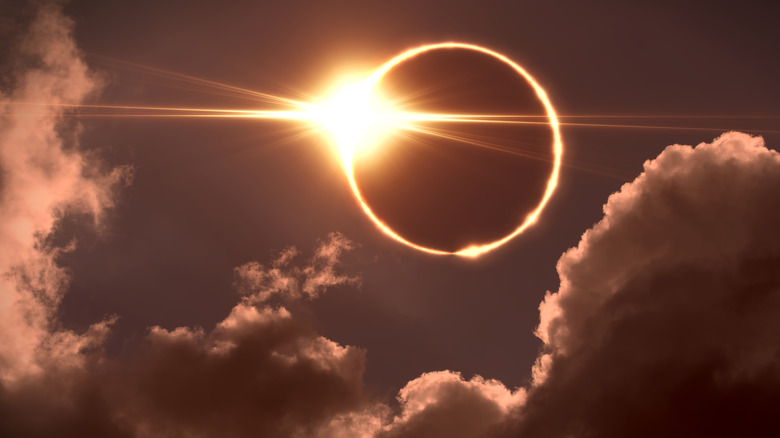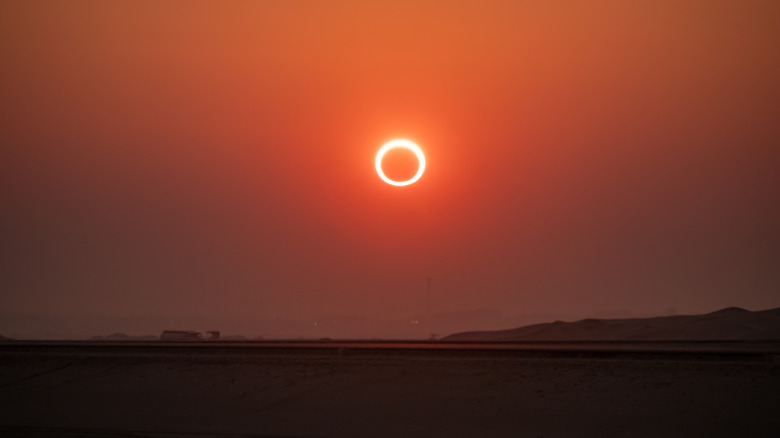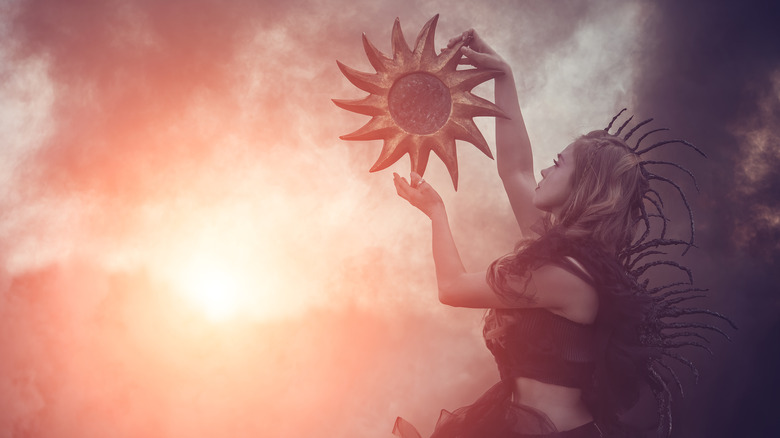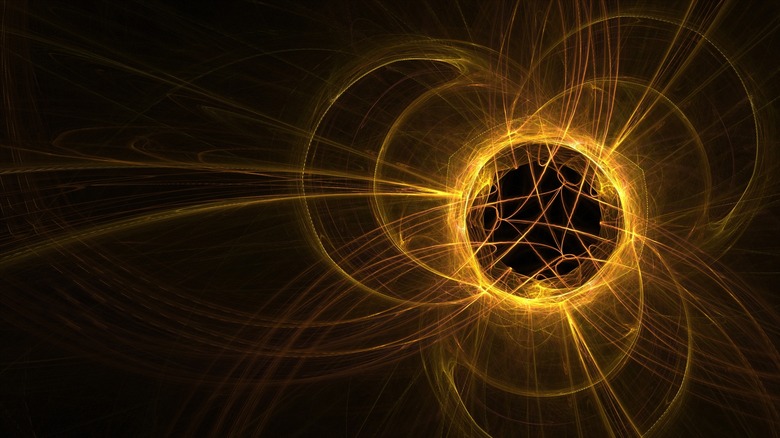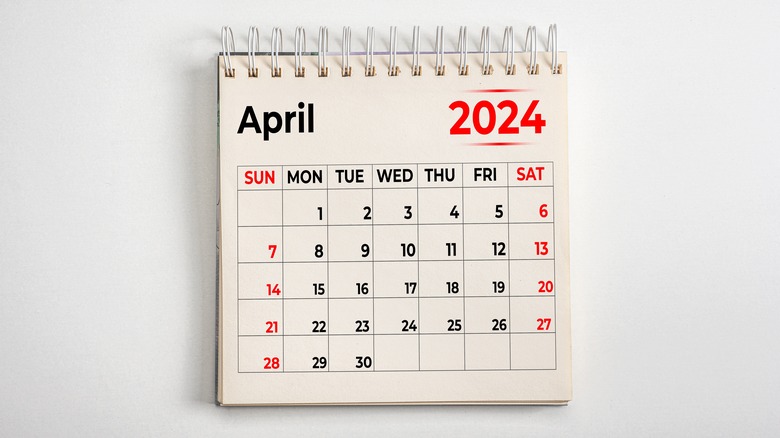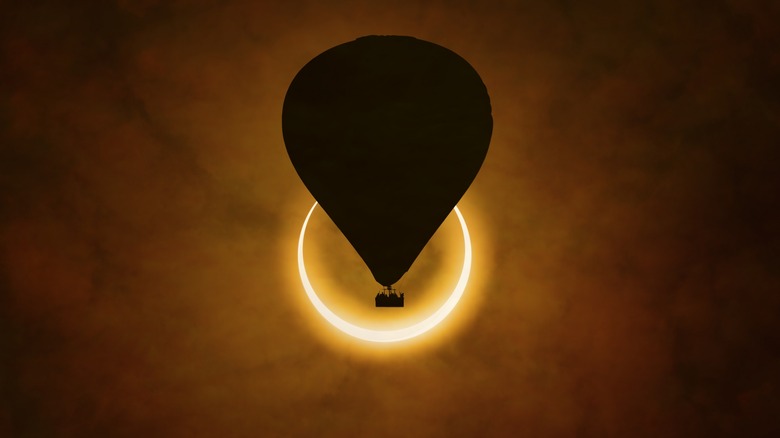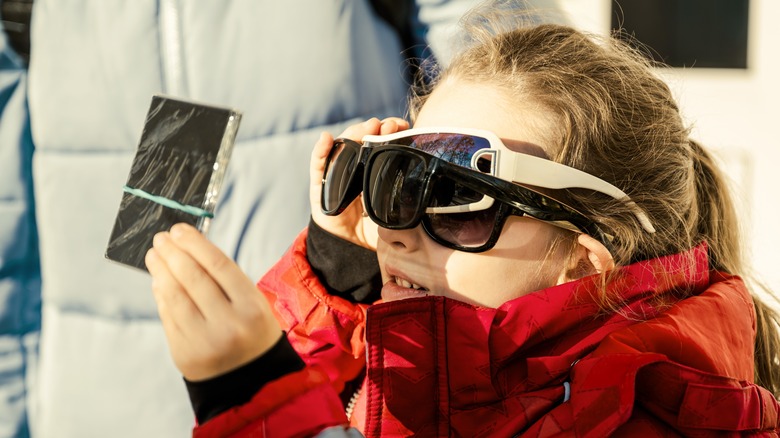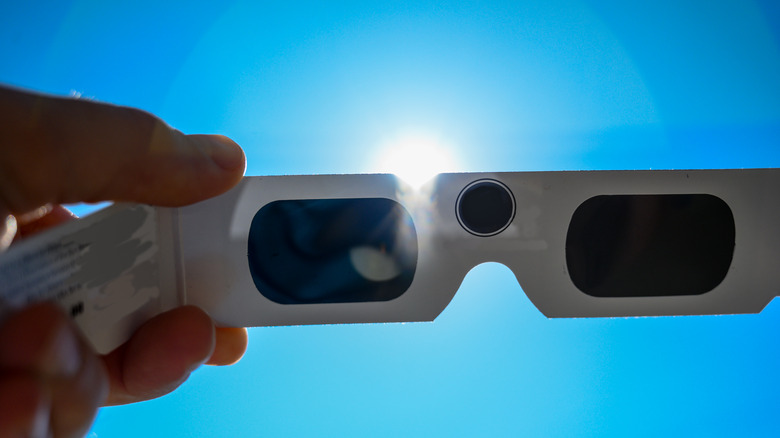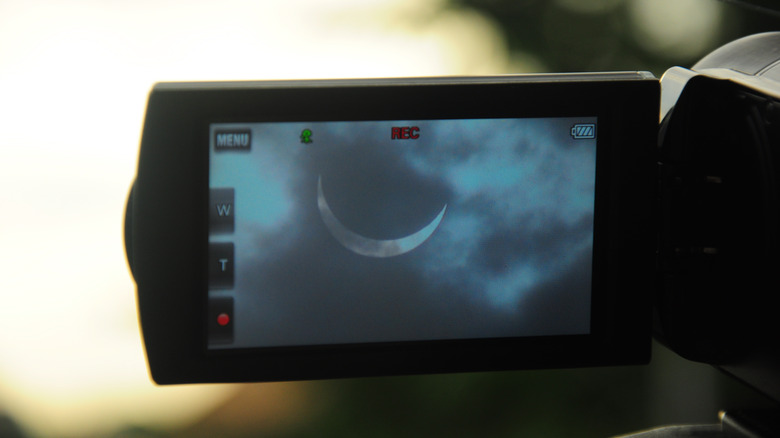Everything You Need To Know Before Watching Your First Solar Eclipse
As the moon gracefully glides between the Earth and the sun, casting its ethereal shadow upon our planet, a solar eclipse unfolds, captivating observers with its mesmerizing beauty. For eons, humanity has marveled at this celestial dance, interpreting its occurrence through myth and legend. Today, for photographers and stargazing enthusiasts alike, capturing the intricate play of light and shadow during a solar eclipse is a momentous opportunity — a chance to immortalize the celestial spectacle and preserve its fleeting wonder for generations to come.
If you've never seen a solar eclipse before and are wondering if there are any special measures you need to take before the one coming this spring, don't fret. We've crafted this guide to walk you through every aspect of the experience. From understanding the science behind eclipses to practical tips for safe viewing, we've got you covered. In this comprehensive exploration, we delve into the mechanics of this cosmic phenomenon. Whether you're a seasoned sky-watcher or a curious novice, join us as we unravel the mysteries of solar eclipses and prepare for the awe-inspiring spectacle of nature's grandest show.
What causes a solar eclipse?
A solar eclipse unfolds when the moon aligns perfectly between the Earth and the sun. This positioning typically occurs during the new moon phase, according to the American Astronomical Society. The moon must be positioned precisely in line with the sun and Earth, obscuring the sun's brilliance from certain vantage points on our planet.
The moon's shadow plays a pivotal role in shaping the nature of the eclipse (via National Weather Service). It is actually composed of two regions. The first is the umbra, the darker central shadow, where the sun is entirely obscured. When cast over the sun, it plunges the area into an eerie twilight and reveals a breathtaking golden ring of sunlight known as the solar corona. Surrounding the umbra is the penumbra, a lighter outer shadow where the sun is only partially blocked, casting a delicate veil over the landscape.
As the moon gracefully traverses its orbit and aligns with the sun, it casts its ephemeral shadow upon the Earth, inviting us to witness the breathtaking beauty and cosmic ballet of a solar eclipse.
Types of solar eclipses
The moon's dual shadows give rise to different types of solar eclipses, each offering its own unique spectacle. Total solar eclipses stand as the pinnacle of celestial events, captivating observers as the moon gracefully aligns itself perfectly with the sun, obscuring this radiant disk entirely from view. In these rare moments when the sun is completely enveloped within the umbra, day turns to night, and the ethereal glow of the sun's corona emerges, painting the sky with an otherworldly beauty that leaves onlookers in awe.
Partial solar eclipses offer a subtler yet equally captivating display as the moon partially obscures the sun. They occur when only a portion of the sun is concealed by the moon, casting a striking crescent-shaped shadow across the Earth (via National Weather Service).
Annular eclipses, distinguished by their unique ring-like appearance, occur when the moon is positioned at a farther point away from the Earth in its orbit, appearing slightly smaller than the sun. As a result, the sun's outer edges remain visible, forming a radiant halo of light encircling the darkened silhouette of the moon. Each type of solar eclipse offers a glimpse into the cosmic ballet of our solar system, reminding us of the beauty and majesty that lie beyond our earthly confines.
Why are eclipses so special?
Throughout history, solar eclipses have held a significant place in the collective consciousness of civilizations worldwide. Ancient cultures, including the Babylonians and Egyptians, viewed these celestial phenomena with a mixture of awe, fear, and reverence, often interpreting them as omens or divine messages from the heavens. These interpretations influenced societal beliefs, rituals, and practices, shaping the fabric of ancient civilizations in profound ways (via High Point Scientific).
In modern times, solar eclipses continue to captivate and inspire, albeit through a different lens. For scientists and astronomers, eclipses provide invaluable opportunities for research and observation, offering unique insights into the workings of our solar system and beyond. The precise alignment of the sun, moon, and Earth during an eclipse allows scientists to study the sun's outer atmosphere and the corona and investigate phenomena such as solar flares and magnetic fields.
Beyond the scientific community, solar eclipses serve as powerful catalysts for public engagement and shared cultural experiences. These events draw people from all walks of life together as they gather to witness the awe-inspiring spectacle unfolding overhead. Whether observing from bustling city centers or remote wilderness areas, people unite in a collective appreciation for the wonders of the universe. Moreover, solar eclipses offer opportunities for education and outreach, inspiring curiosity and wonder in individuals of all ages. Through public events, educational programs, and media coverage, eclipses spark conversations about science, astronomy, and the natural world, fostering a deeper appreciation for the interconnectedness of our planet and the cosmos.
How often do solar eclipses occur?
Contrary to popular belief, the occurrence of solar eclipses isn't as rare as one might think. In fact, there can be anywhere from two to five solar eclipses annually, according to the Natural History Museum. These celestial events come in various forms, ranging from partial to total and annular eclipses, each distinguished by the intricate alignment and positioning of the sun, moon, and Earth.
However, the spectacle of these eclipses isn't evenly distributed across the globe. The geographic location of an observer plays a pivotal role in whether they can witness an eclipse firsthand. Factors such as latitude and longitude are critical determinants of visibility. Interestingly, many of these solar phenomena happen in remote areas of the ocean away from human habitation, which means that most people miss out on experiencing them directly, adding to their mystique and allure (via National Solar Observatory).
Furthermore, local weather conditions significantly impact the visibility and viewing experience of an eclipse. Picture the disappointment of eagerly anticipating a solar eclipse only to have it obscured by clouds and rainy weather. These atmospheric elements can either enhance or hinder the spectacle, shaping the memories of observers around the world.
When and where will the next one be?
The excitement building around the next solar eclipse is undeniable, as enthusiasts eagerly await the chance to experience this cosmic wonder firsthand. Luckily, meticulous calculations provide a roadmap for observing upcoming solar eclipses, ensuring that enthusiasts worldwide have the opportunity to witness this celestial spectacle.
Advanced astronomical predictions, supported by cutting-edge technologies such as eclipse maps and calculators, offer invaluable insights into the intricate details of future eclipses. These tools meticulously outline the dates, times, and visibility of upcoming events, empowering enthusiasts to plan their viewing experiences with meticulous precision and eager anticipation.
As for the next eagerly anticipated solar eclipse as of this writing, NASA says to mark your calendars for April 8, 2024. On this date, a total solar eclipse will cast its shadow across North America, traversing Mexico, the United States, and Canada. The path of totality will stretch from Texas to Maine, providing a breathtaking panorama of celestial beauty. Even those outside the path of totality will still be treated to a partial eclipse, visible throughout all 48 contiguous U.S. states. From the bustling streets of cities to the serene landscapes of remote areas, this eclipse promises to etch unforgettable memories in the minds of millions, forging a profound connection between humanity and the vast expanse of the cosmos.
How long do solar eclipses last?
The length of a solar eclipse depends on two things: the moon's speed and what astronomers call eclipse "geometry" (via NASA). The first is pretty easy: the moon moves at a slightly variable pace around the Earth. If it moves faster, the eclipse is shorter. Eclipse geometry refers to how the sun, moon, and Earth line up. The time the sun is fully covered during a total eclipse depends on how fast the moon's shadow moves across the Earth's surface. This is affected by things like the shape of the Earth and how far the moon is.
Total solar eclipses, where the sun is fully covered, last the longest. They can last from a few seconds to over seven minutes if everything is just right. Partial solar eclipses, where only part of the sun is covered, are shorter. They can last from a few minutes to about an hour, depending on where you are and where the moon is. Annular eclipses, where the moon looks smaller than the sun, also don't last long.
On April 8, 2024, the longest total eclipse along the path will be, as of this writing, 4 minutes and 28 seconds, according to Astronomy Magazine. In comparison, the last total solar eclipse in the U.S. on August 21, 2017, lasted only 2 minutes and 40 seconds. Some eclipses are super short, but the longest one we expect to see within the next thousand years is supposed to last 7 minutes and 29 seconds. Astronomers predict it will happen on July 16, 2186.
Safety tips for viewing
When it comes to observing a solar eclipse, prioritizing safety is paramount to protecting your eyesight. Firstly, use certified solar viewing glasses that are specifically designed to filter out harmful solar radiation. The American Astronomical Society states that it's important to ensure that these glasses are certified by reputable organizations and feature the appropriate ISO 12312-2 certification. Avoid using regular sunglasses or improvised filters, as they do not offer sufficient protection from the intense glare of the sun.
Alternatively, handheld solar viewers are a safe option that provides convenient viewing of the eclipse. These viewers typically feature solar filters that meet international safety standards, allowing you to observe the sun without risking eye damage. Under no circumstances should you look directly at the sun without proper eye protection, even during partial phases of the eclipse. If you are unable to obtain certified eclipse glasses or handheld viewers, refrain from attempting to view the eclipse directly with your naked eyes.
If the sun is blocked, why do I need eye protection?
It's a common misconception that it's safe to look directly at the sun during a solar eclipse just because it's partially or fully obscured. However, even when the sun is partially blocked by the moon, it still emits intense solar radiation that can be harmful to your eyes. The danger lies in the fact that during an eclipse, the sun's visible light is reduced, which can trick your eyes into feeling more comfortable looking at it. However, the sun's ultraviolet (UV) and infrared (IR) radiation remain just as strong as ever, and they can still cause serious damage to your eyes if you stare at the sun without proper protection.
Solar retinopathy is a real risk during solar eclipses, per Retinal Physician. This condition occurs when the sun's rays directly damage the cells in the retina, the light-sensitive tissue at the back of your eye. The damage caused by solar retinopathy can result in permanent vision loss or impairment.
Certified solar viewing glasses or other safe viewing methods, such as solar telescopes or pinhole projectors, are specifically designed to filter out harmful UV and IR radiation while allowing you to enjoy the spectacle of the eclipse safely. Remember, your eyes are precious, and protecting them should always be a top priority. So, even when the sun is partially blocked, never underestimate the importance of proper eye protection.
Can I take pictures of or record a solar eclipse?
Photographing or recording a solar eclipse can be a deeply rewarding and memorable experience. However, it's crucial to take special precautions and use the right equipment to ensure both the safety of your eyes and the quality of your images or recordings. To start, Mr. Eclipse states to use solar filters to protect your camera or smartphone lens, just as you would protect your eyes. These filters are also designed to block out solar radiation while allowing you to capture clear images of the eclipse. It's important to ensure that your filters are certified and suitable for solar photography.
Next, use a tripod or stable surface to help maintain sharpness and clarity in your photos or recordings, especially during longer exposure times. Experimenting with exposure settings is key. Solar eclipses present unique lighting conditions, so it's essential to try different settings to achieve the best results. Start with lower ISO settings and faster shutter speeds, adjusting as needed to capture the eclipse's phases and nuances.
When framing your shots, avoid looking directly at the sun through the camera viewfinder. Instead, use the camera's screen or an electronic viewfinder if available. Pro-tip: Don't forget to capture the ambiance and surroundings during the eclipse. The evolving light and shadows contribute depth and context to your visuals, enhancing the immersive quality of your photographs or recordings.
